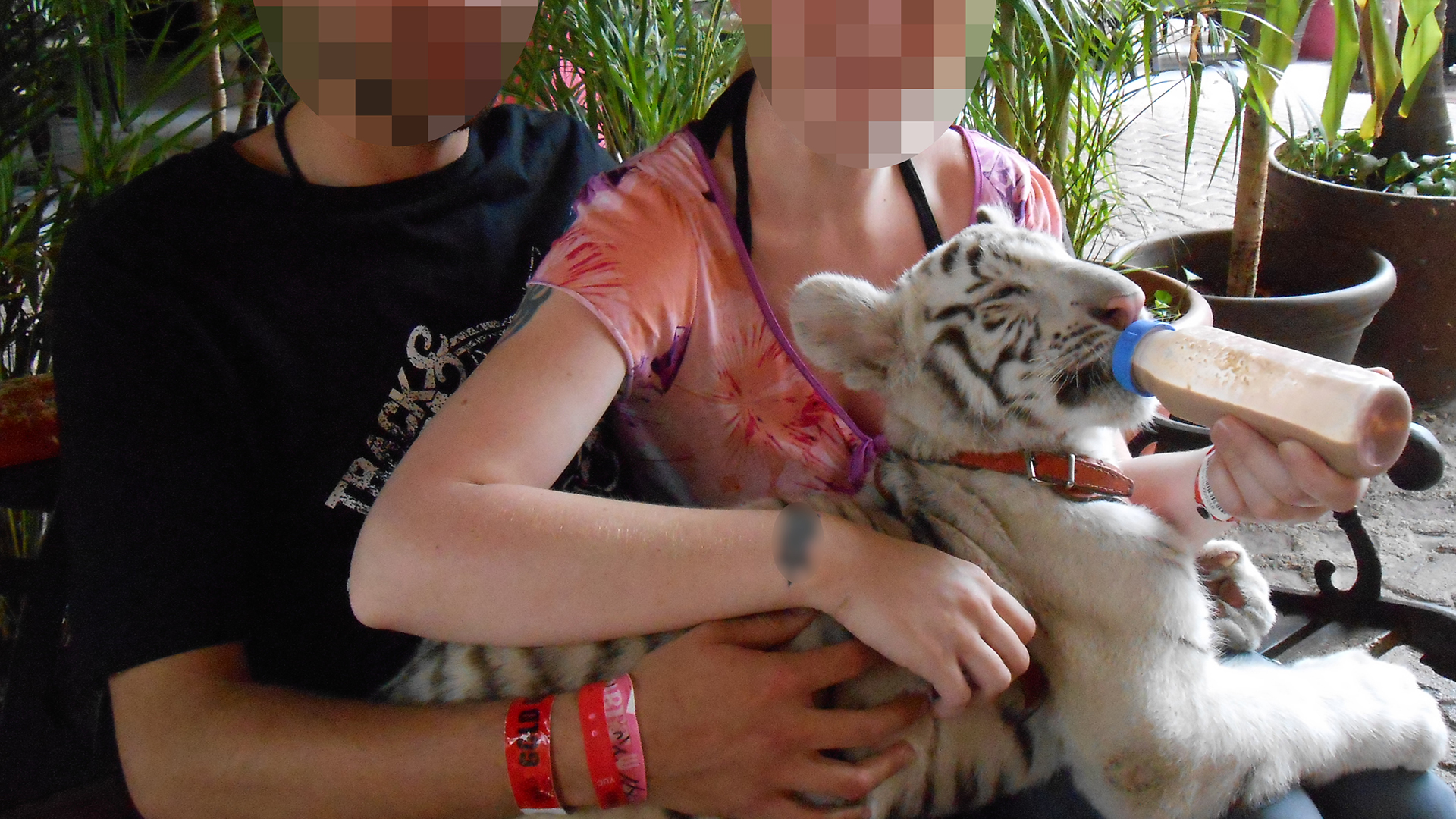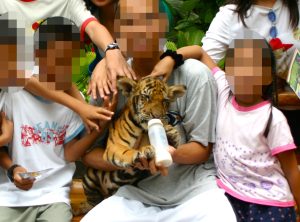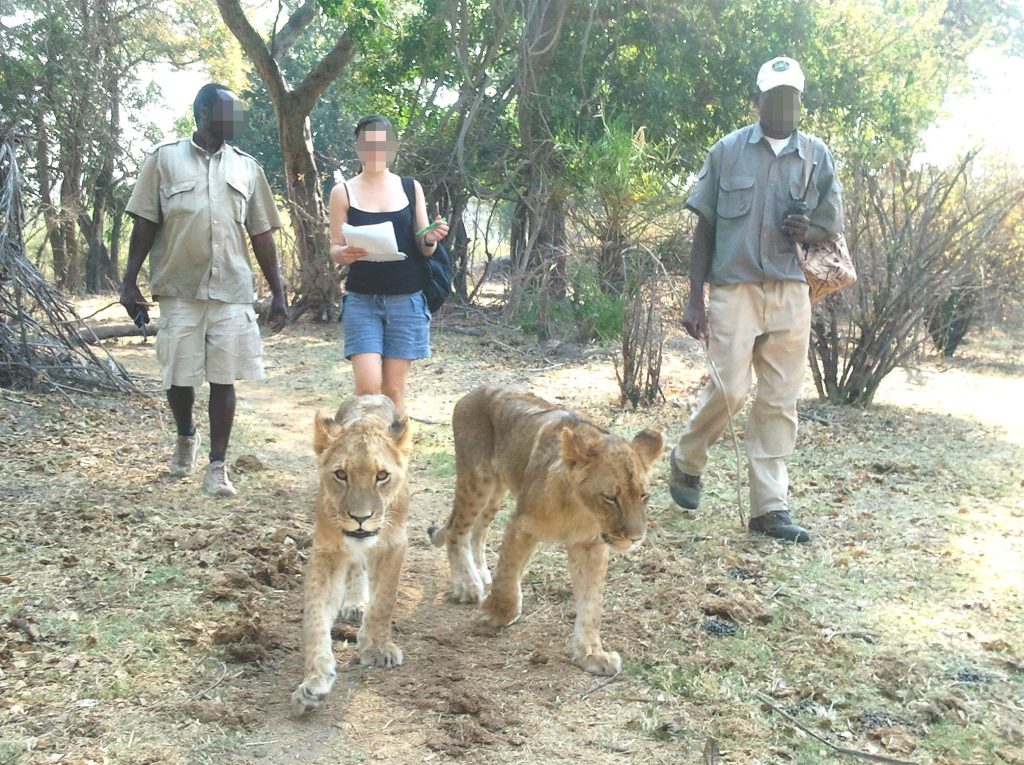
Animal Encounters and Interaction: Big Cats
Born Free strongly advises people not to participate in close contact activities with captive big cats.
 Many big cats in captivity, such as tigers, lions and leopards, are used for encounters, interaction and as photographic props. There are many animal welfare and public health and safety concerns involved with this close contact.
Many big cats in captivity, such as tigers, lions and leopards, are used for encounters, interaction and as photographic props. There are many animal welfare and public health and safety concerns involved with this close contact.
Big cats used for public interaction may have been deliberately separated from their mothers just days after being born, so they can be hand-reared.
Not only is this extremely stressful to both cub and mother, but the deprivation of their mother’s nutritious milk can also lead to mineral deficiencies affecting the cub’s growth and development.
At around six months old, big cats usually become too dangerous to handle and, having outgrown their use as a living prop, may be sold on or even killed. The owners may then source new young animals.
However, some zoos and other attractions continue to use fully-grown adult big cats as photographic props and for interaction activities.
Whether wild or captive-bred, big cats pose a significant risk to public safety which should never be underestimated. They can cause severe physical injury or death, and can also transmit harmful diseases.
In an attempt to reduce some of these risks, big cats are frequently declawed, may have their teeth removed or filed down, and may be chained or drugged.

Many captive facilities, including walking-with lion providers, claim they breed animals for conservation purposes and will, at some point in the future, return them to the wild. However, it is extremely unlikely this will happen, not least because they now see humans as a source of food and would not have sufficient fear of humans if released.
Born Free is particularly concerned about the lion-petting and walk-with activities that take place predominantly in South Africa, but in other countries, too.
Many of these lions, whom were cuddled by paying tourists as cubs, may eventually be transferred to canned hunting facilities to be shot by paying trophy hunters. South Africa’s growing lion breeding industry has also been found to have links to wildlife trafficking.
In some countries, such as China and Thailand, there are numerous captive facilities breeding or farming thousands of tigers. Visitors have the opportunity to bottle-feed cubs and pose with the animals for photos. Many of these facilities have also been found to have connections to the tiger trade.
